- Home
- Georges Simenon
The Carter of ’La Providence’
The Carter of ’La Providence’ Read online
Georges Simenon
THE CARTER OF LA PROVIDENCE
Translated by David Coward
Contents
1. Lock 14
2. The Passengers on Board the Southern Cross
3. Mary Lampson’s Necklace
4. The Lover
5. The YCF Badge
6. The American Sailor’s Cap
7. The Bent Pedal
8. Ward 10
9. The Doctor
10. The Two Husbands
11. Right of Way
EXTRA: Chapter 1 from The Yellow Dog
ABOUT THE AUTHOR
Georges Simenon was born on 12 February 1903 in Liège, Belgium, and died in 1989 in Lausanne, Switzerland, where he had lived for the latter part of his life. He published seventy-five novels and twenty-eight short stories featuring Inspector Maigret.
Simenon was very fond of boats and spent six months in 1928 navigating the rivers and canals of France. The Carter of La Providence is one of several novels written on board his boat the Ostrogoth.
‘I had my second boat built at Fécamp, the Ostrogoth. I brought it first to Paris, where I had it christened (on a whim) by the priest of Notre Dame … then Belgium, Holland, Germany.’
PENGUIN CLASSICS
THE CARTER OF LA PROVIDENCE
‘I love reading Simenon. He makes me think of Chekhov’
William Faulkner
‘A truly wonderful writer … marvellously readable – lucid, simple, absolutely in tune with the world he creates’
Muriel Spark
‘Few writers have ever conveyed with such a sure touch, the bleakness of human life’
A. N. Wilson
‘One of the greatest writers of the twentieth century … Simenon was unequalled at making us look inside, though the ability was masked by his brilliance at absorbing us obsessively in his stories’
Guardian
‘A novelist who entered his fictional world as if he were part of it’
Peter Ackroyd
‘The greatest of all, the most genuine novelist we have had in literature’
André Gide
‘Superb … The most addictive of writers … A unique teller of tales’
Observer
‘The mysteries of the human personality are revealed in all their disconcerting complexity’
Anita Brookner
‘A writer who, more than any other crime novelist, combined a high literary reputation with popular appeal’
P. D. James
‘A supreme writer … Unforgettable vividness’
Independent
‘Compelling, remorseless, brilliant’
John Gray
‘Extraordinary masterpieces of the twentieth century’
John Banville
1. Lock 14
The facts of the case, though meticulously reconstructed, proved precisely nothing – except that the discovery made by the two carters from Dizy made, frankly, no sense at all.
On the Sunday – it was 4 April – it had begun to rain heavily at three in the afternoon.
At that moment, moored in the reach above Lock 14, which marks the junction of the river Marne and the canal, were two motor barges, both heading downstream, a canal boat which was being unloaded and another having its bilges washed out.
Shortly before seven, just as the light was beginning to fade, a tanker-barge, the Éco-III, had hooted to signal its arrival and had eased itself into the chamber of the lock.
The lock-keeper had not been best pleased, because he had relatives visiting at the time. He had then waved ‘no’ to a boat towed by two plodding draught horses which arrived in its wake only minutes later.
He had gone back into his house but had not been there long when the man driving the horse-drawn boat, who he knew, walked in.
‘Can I go through? The skipper wants to be at Juvigny for tomorrow night.’
‘If you like. But you’ll have to manage the gates by yourself.’
The rain was coming down harder and harder. Through his window, the lock-keeper made out the man’s stocky figure as he trudged wearily from one gate to the other, driving both horses on before making the mooring ropes fast to the bollards.
The boat rose slowly until it showed above the lock side. It wasn’t the barge master standing at the helm but his wife, a large woman from Brussels, with brash blonde hair and a piercing voice.
By 7.20 p.m., the Providence was tied up by the Café de la Marine, behind the Éco-III. The tow-horses were taken on board. The carter and the skipper headed for the café where other boat men and two pilots from Dizy had already assembled.
At eight o’clock, when it was completely dark, a tug arrived under the lock with four boats in tow.
Its arrival swelled the crowd in the Café de la Marine. Six tables were now occupied. The men from one table called out to the others. The newcomers left puddles of water behind them as they stamped the mud off their boots.
In the room next door, a store lit by an oil-lamp, the women were buying whatever they needed.
The air was heavy. Talk turned to an accident that had happened at Lock 8 and how much of a hold-up this would mean for boats travelling upstream.
At nine o’clock, the wife of the skipper of the Providence came looking for her husband and their carter. All three of them then left after saying goodnight to all.
By ten o’clock, the lights had been turned out on most of the boats. The lock-keeper accompanied his relations as far as the main road to Épernay, which crosses the canal two kilometres further on from the lock.
He did not notice anything out of the ordinary. On his way back, he walked past the front of the café. He looked in and was greeted by a pilot.
‘Come and have a drink! Man, you’re soaked to the skin …’
He ordered rum, but did not sit down. Two carters got up, heavy with red wine, eyes shining, and made their way out to the stable adjoining the café, where they slept on straw, next to their horses.
They weren’t exactly drunk. But they had had enough to ensure that they would sleep like logs.
There were five horses in the stable, which was lit by a single storm lantern, turned down low.
At four in the morning, one of the carters woke his mate, and both began seeing to their animals. They heard the horses on the Providence being led out and harnessed.
At the same time, the landlord of the café got up and lit the lamp in his bedroom on the first floor. He also heard the Providence as it got under way.
At 4.30, the diesel engine of the tanker-barge spluttered into life, but the boat did not leave for another quarter of an hour, after its skipper had swallowed a bracing hot toddy in the café which had just opened for business.
He had scarcely left and his boat had not yet got as far as the bridge when the two carters made their discovery.
One of them was leading his horses out to the towpath. The other was ferreting through the straw looking for his whip when one hand encountered something cold.
Startled, because what he had touched felt like a human face, he fetched his lantern and cast its light on the corpse which was about to bring chaos to Dizy and disrupt life on the canal.
Detective Chief Inspector Maigret of the Flying Squad was running through these facts again, putting them in context.
It was Monday evening. That morning, magistrates from the Épernay prosecutor’s office had come out to make the
routine inspection of the scene of the crime. The body, after being checked by the people from Criminal Records and examined by police surgeons, had been moved to the mortuary.
It was still raining, a fine, dense, cold rain which had gone on falling without stopping all night and all day.
Shadowy figures came and went around the lock gates, where a barge was rising imperceptibly.
The inspector had been there for an hour and had got no further than familiarizing himself with a world which he was suddenly discovering and about which, when he arrived, he had had only mistaken, confused ideas.
The lock-keeper had told him:
‘There was hardly anything in the canal basin: just two motor barges going downstream, one motorized barge heading up, which had gone through the lock in the afternoon, one boat cleaning out its bilges and two panamas. Then the tin tub turned up with four vessels in tow …’
In this way did Maigret learn that a ‘tin tub’ is a tug and a ‘panama’ a boat without either an engine or its own horses on board, which employs a carter with his own animals for a specified distance, known in the trade as ‘hitching a lift’.
When he arrived at Dizy all he’d seen was a narrow canal, three miles from Épernay, and a small village near a stone bridge.
He had had to slog through the mud of the towpath to reach the lock, which was two kilometres from Dizy.
There he had found the lock-keeper’s house. It was made of grey stone, with a board that read: ‘Office’.
He had walked into the Café de la Marine, which was the only other building in the area.
On his left was a run-down café-bar with brown oilcloth-covered tables and walls painted half brown and half a dirty yellow.
But it was full of the characteristic odour which marked it out as different from the usual run of country cafés. It smelled of stables, harness, tar, groceries, oil and diesel.
There was a small bell just by the door on the right. Transparent advertisements had been stuck over the glass panels.
Inside was full of stock: oilskins, clogs, canvas clothes, sacks of potatoes, kegs of cooking oil and packing cases containing sugar, dried peas and beans cheek-by-jowl with fresh vegetables and crockery.
There were no customers in sight. The stable was empty except for the horse which the landlord only saddled up when he went to market, a big grey as friendly as a pet dog. It was not tethered and at intervals would walk around the yard among the chickens.
Everywhere was sodden with rainwater. It was the most striking thing about the place. And the people who passed by were black, gleaming figures who leaned into the rain.
A hundred metres away, a narrow-gauge train shunted backwards and forwards in a siding. The carter had rigged up an umbrella on the back of the miniature engine and he crouched under it, shivering, with shoulders hunched.
A barge hauled by boat hooks slid along the canal bank heading for the lock chamber, from which another was just emerging.
How had the woman got here? And why? That was what had baffled the police at Épernay, the prosecutor’s people, the medics and the specialists from Records. Maigret was now turning it over and over in his heavy head.
She had been strangled, that was the first sure fact. Death had occurred on the Sunday evening, probably around 10.30.
And the body had been found in the stable a little after four in the morning.
There was no road anywhere near the lock. There was nothing there to attract anyone not interested in barges and canals. The towpath was too narrow for a car. On the night in question anyone on foot would have had to wade knee deep through the puddles and mud.
It was obvious that the woman belonged to a class where people were more likely to ride in expensive motor-cars and travel by sleeper than walk.
She had been wearing only a beige silk dress and white buckskin shoes designed more for the beach than for city streets.
The dress was creased, but there was no trace of mud on it. Only the toe of the left shoe was wet when she was found.
‘Between thirty-eight and forty,’ the doctor had said after he’d examined the body.
Her earrings were real pearls worth about 15,000 francs. Her bracelet, a mixture of gold and platinum worked in the very latest style, was more artistic than costly even though it was inscribed with the name of a jeweller in the Place Vendôme.
Her hair was brown, waved and cut very short at the nape of the neck and temples.
The face, contorted by the effects of strangulation, must have been unusually pretty.
No doubt a bit of a tease.
Her manicured, varnished fingernails were dirty.
Her handbag had not been found near her. Police officers from Épernay, Rheims and Paris, armed with a photograph of the body, had been trying all day to establish her identity but without success.
Meanwhile the rain continued to fall with no let-up over the dreary landscape. To left and right, the horizon was bounded by chalk hills streaked with white and black, where at this time of year the vines looked like wooden crosses in a Great War cemetery.
The lock-keeper, recognizable only because he wore a silver braided cap, trudged wearily around the chamber of the lock, in which the water boiled every time he opened the sluices.
And every time a vessel was raised or lowered he told the tale to each new bargee.
Sometimes, after the official papers had been signed, the two of them would hurry off to the Café de la Marine and down a couple or three glasses of rum or a half litre of white wine.
And every time, the lock-keeper would point his chin in the direction of Maigret, who was prowling around with no particular purpose and thus probably made people think he did not know what he was doing.
Which was true. There was nothing normal about the case. There was not even a single witness who could be questioned.
For once the people from the prosecutor’s office had interviewed the lock-keeper and spoken to the Waterways Board’s civil engineer, they had decided that all the boats were free to go on their way.
The two carters had been the last to leave, around noon, each in charge of a ‘panama’.
Since there is a lock every three or four kilometres, and given that they are all connected by telephone, the location of any boat at any given time could be established and any vessel stopped.
Besides which, a police inspector from Épernay had questioned everyone, and Maigret had been given transcripts of their written statements, which told him nothing except that the facts did not add up.
Everyone who had been in the Café de la Marine the previous day was known either to the owner of the bar or the lock-keeper and in most cases to both.
The carters spent at least one night each week in the same stable and invariably in the same, semi-drunken state.
‘You know how it is! You take a drop at every lock … Nearly all the lock-keepers sell drink.’
The tanker-barge, which had arrived on Sunday afternoon and moved on again on Monday morning, was carrying petrol and was registered to a big company in Le Havre.
The Providence, which was owned by the skipper, passed this way twenty times a year with the same pair of horses and its old carter. And this was very much the case with all the others.
Maigret was in a tetchy mood. He entered the stable and from there went to the café or the shop any number of times.
He was seen walking as far as the stone bridge looking as though he was counting his steps or looking for something in the mud. Grimly, dripping with water, he watched as ten vessels were raised or lowered.
People wondered what he had in mind. The answer was: nothing. He didn’t even try to find what might be called clues, but rather to absorb the atmosphere, to capture the essence of canal life, which was so different from the world he knew.
He had made sure t
hat someone would lend him a bi-cycle if he should need to catch up with any of the boats.
The lock-keeper had let him have a copy of the Official Handbook of Inland Waterways, in which out-of-the-way places like Dizy take on an unsuspected importance for topographical reasons or for some particular feature: a junction, an intersection, or because there is a port or a crane or even an office.
He tried to follow in his mind’s eye the progress of the barges and carters:
Ay – Port – Lock 13.
Mareuil-sur-Ay – Shipyard – Port – Turning dock – Lock 12 – Gradient 74, 36 …
Then Bisseuil, Tours-sur-Marne, Condé, Aigny …
Right at the far end of the canal, beyond the Langres plateau, which the boats reached by going up through a series of locks and then were lowered down the other side, lay the Sâone, Chalon, Mâcon, Lyons …
‘What was the woman doing here?’
In a stable, wearing pearl earrings, her stylish bracelet and white buckskin shoes!
She must have been alive when she got there because the crime had been committed after ten in the evening.
But how? And why? And no one had heard a thing! She had not screamed. The two carters had not woken up.
If the whip had not been mislaid, it was likely the body might not have been discovered for a couple of weeks or a month, by chance when someone turned over the straw.
And other carters passing through would have snored the night away next to a woman’s corpse!
Despite the cold rain, there was still a sense of something heavy, something forbidding in the atmosphere. And the rhythm of life here was slow.
Feet shod with boots or clogs shuffled over the stones of the lock or along the towpath. Tow-horses streaming with water waited while barges were held at the lock before setting off again, taking the strain, thrusting hard with their hind legs.
Soon evening would swoop down as it had the previous day. Already, barges travelling upstream had come to a stop and were tying up for the night, while their stiff-limbed crews made for the café in groups.

 The Snow Was Dirty
The Snow Was Dirty Maigret and the Tramp
Maigret and the Tramp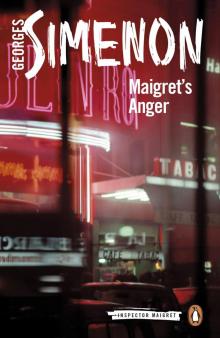 Maigret's Anger
Maigret's Anger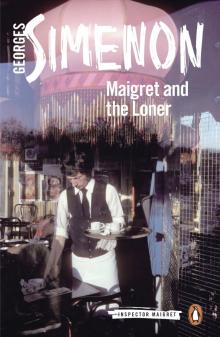 Maigret and the Loner
Maigret and the Loner The Krull House
The Krull House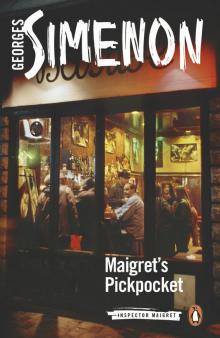 Maigret's Pickpocket
Maigret's Pickpocket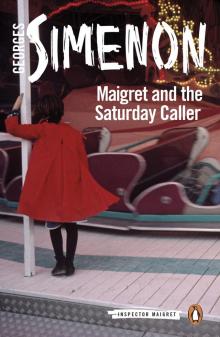 Maigret and the Saturday Caller
Maigret and the Saturday Caller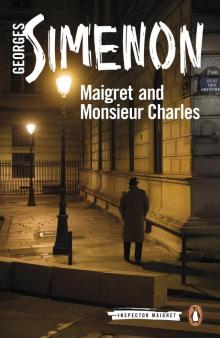 Maigret and Monsieur Charles
Maigret and Monsieur Charles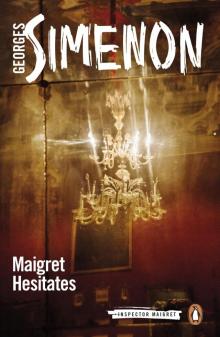 Maigret Hesitates
Maigret Hesitates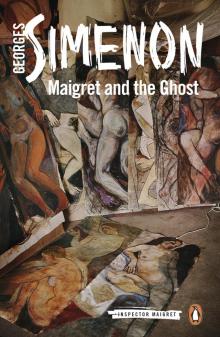 Maigret and the Ghost
Maigret and the Ghost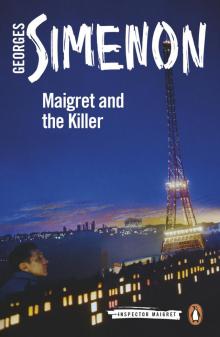 Maigret and the Killer
Maigret and the Killer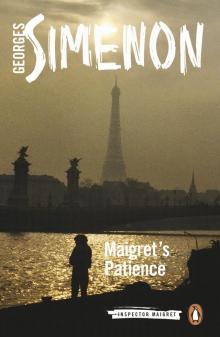 Maigret's Patience
Maigret's Patience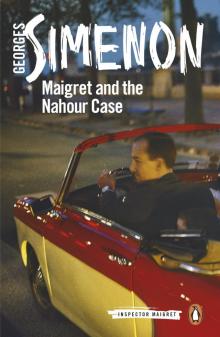 Maigret and the Nahour Case
Maigret and the Nahour Case Maigret's Childhood Friend
Maigret's Childhood Friend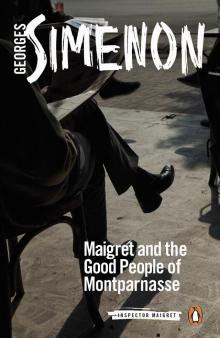 Maigret and the Good People of Montparnasse
Maigret and the Good People of Montparnasse Maigret and the Lazy Burglar
Maigret and the Lazy Burglar Maigret and the Wine Merchant
Maigret and the Wine Merchant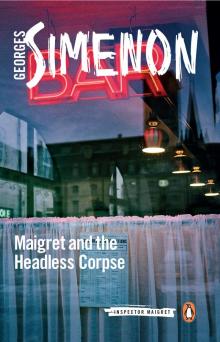 Maigret and the Headless Corpse
Maigret and the Headless Corpse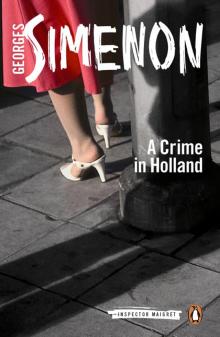 A Crime in Holland
A Crime in Holland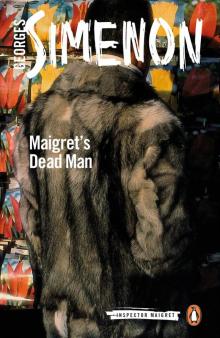 Maigret's Dead Man
Maigret's Dead Man The Late Monsieur Gallet
The Late Monsieur Gallet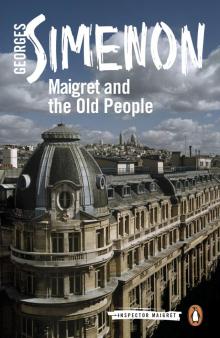 Maigret and the Old People
Maigret and the Old People Maigret's Holiday
Maigret's Holiday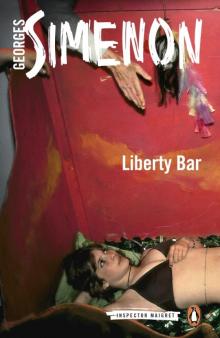 Liberty Bar
Liberty Bar The Misty Harbour
The Misty Harbour The Madman of Bergerac
The Madman of Bergerac Maigret's Mistake
Maigret's Mistake Maigret's Madwoman
Maigret's Madwoman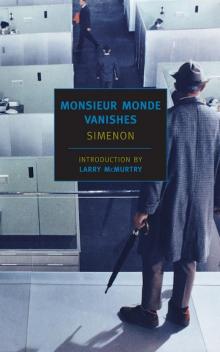 Monsieur Monde Vanishes
Monsieur Monde Vanishes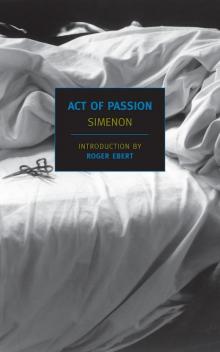 Act of Passion
Act of Passion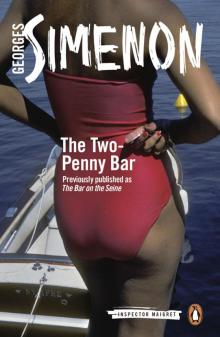 The Two-Penny Bar
The Two-Penny Bar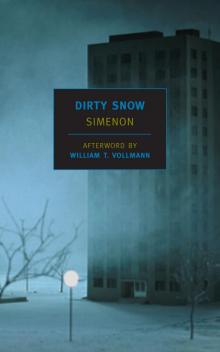 Dirty Snow
Dirty Snow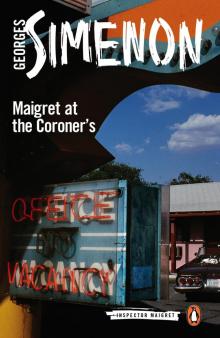 Maigret at the Coroner's
Maigret at the Coroner's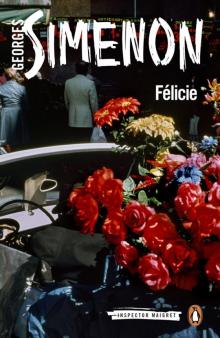 Félicie
Félicie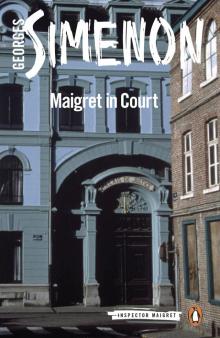 Maigret in Court
Maigret in Court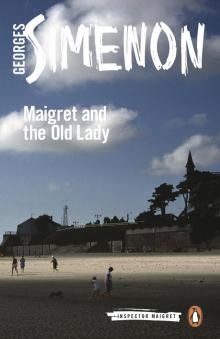 Maigret and the Old Lady
Maigret and the Old Lady The Hand
The Hand The Little Man From Archangel
The Little Man From Archangel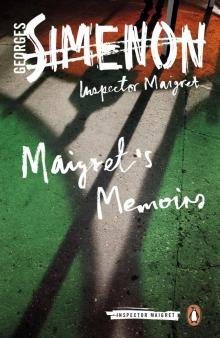 Maigret's Memoirs
Maigret's Memoirs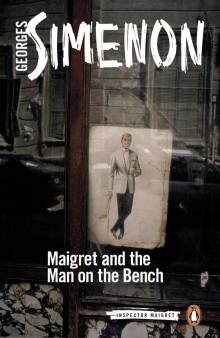 Maigret and the Man on the Bench
Maigret and the Man on the Bench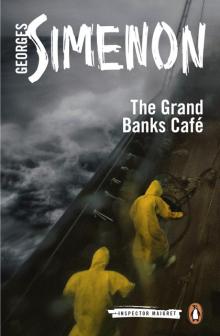 The Grand Banks Café
The Grand Banks Café Pietr the Latvian
Pietr the Latvian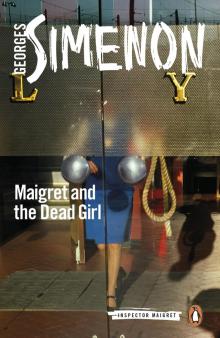 Maigret and the Dead Girl
Maigret and the Dead Girl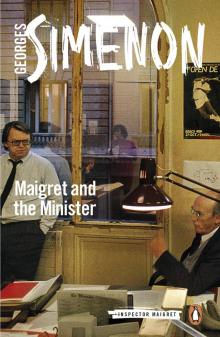 Maigret and the Minister
Maigret and the Minister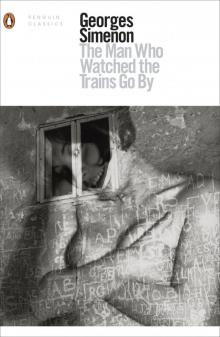 The Man Who Watched the Trains Go By
The Man Who Watched the Trains Go By Inspector Cadaver
Inspector Cadaver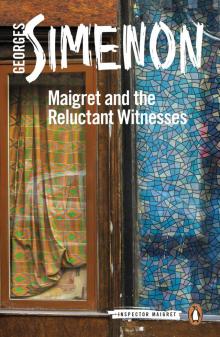 Maigret and the Reluctant Witnesses
Maigret and the Reluctant Witnesses Friend of Madame Maigret
Friend of Madame Maigret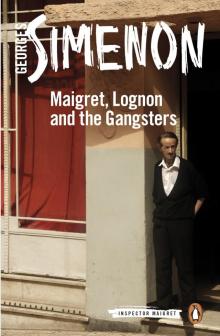 Maigret, Lognon and the Gangsters
Maigret, Lognon and the Gangsters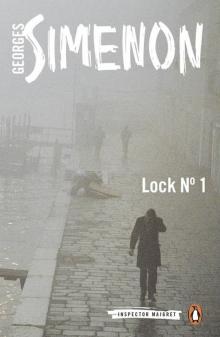 Lock No. 1
Lock No. 1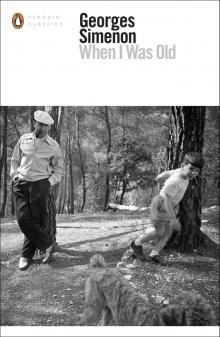 When I Was Old
When I Was Old The Blue Room
The Blue Room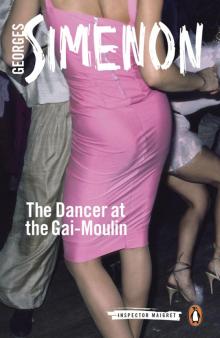 The Dancer at the Gai-Moulin
The Dancer at the Gai-Moulin The Train
The Train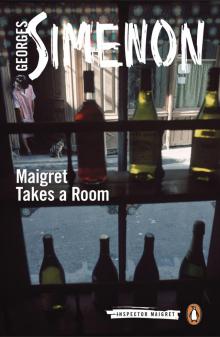 Maigret Takes a Room
Maigret Takes a Room Madame Maigret's Friend
Madame Maigret's Friend Maigret Enjoys Himself
Maigret Enjoys Himself Maigret and the Man on the Boulevard
Maigret and the Man on the Boulevard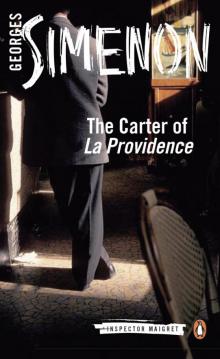 The Carter of ’La Providence’
The Carter of ’La Providence’ The President
The President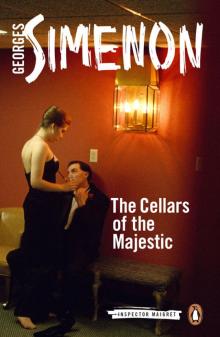 The Cellars of the Majestic
The Cellars of the Majestic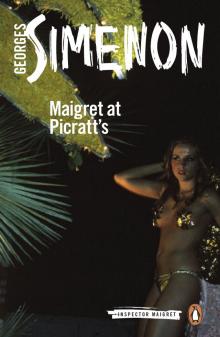 Maigret at Picratt's
Maigret at Picratt's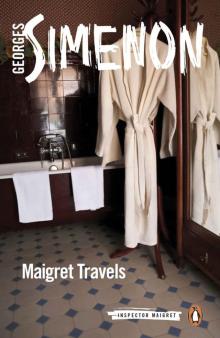 Maigret 51 Maigret Travels
Maigret 51 Maigret Travels My Friend Maigret
My Friend Maigret Maigret
Maigret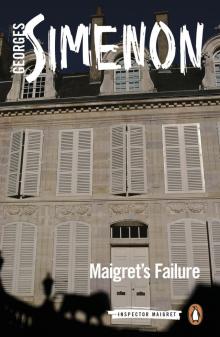 Maigret's Failure
Maigret's Failure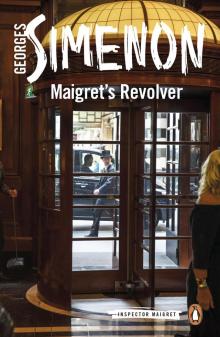 Maigret's Revolver
Maigret's Revolver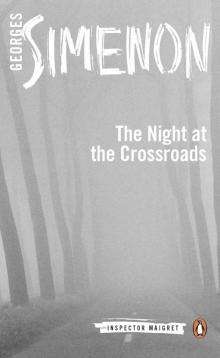 The Night at the Crossroads
The Night at the Crossroads The Flemish House
The Flemish House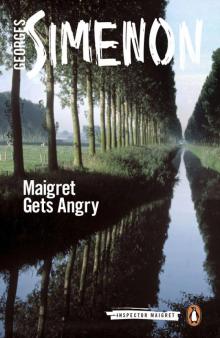 Maigret Gets Angry
Maigret Gets Angry Maigret's Doubts
Maigret's Doubts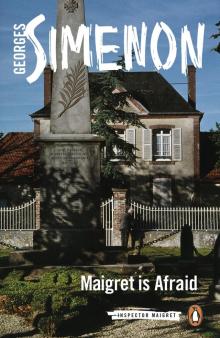 Maigret is Afraid
Maigret is Afraid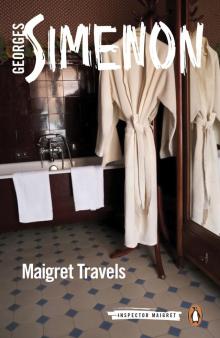 Maigret Travels
Maigret Travels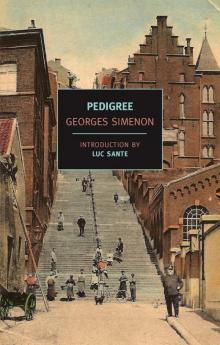 Pedigree
Pedigree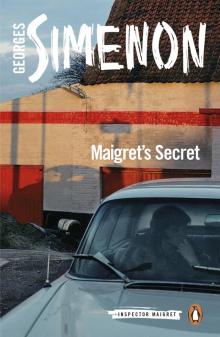 Maigret's Secret
Maigret's Secret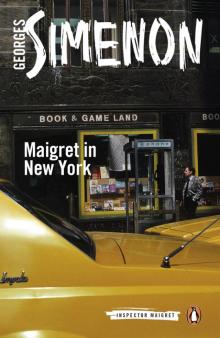 Maigret in New York
Maigret in New York Maigret's Doubts (Inspector Maigret)
Maigret's Doubts (Inspector Maigret) Sunday
Sunday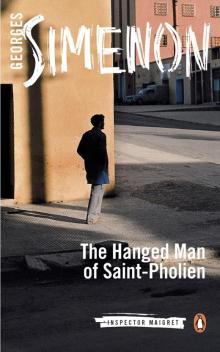 The Hanged Man of Saint-Pholien
The Hanged Man of Saint-Pholien The Yellow Dog
The Yellow Dog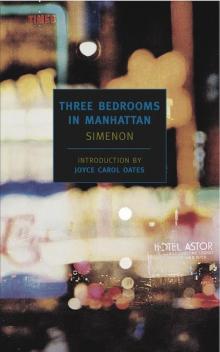 Three Bedrooms in Manhattan
Three Bedrooms in Manhattan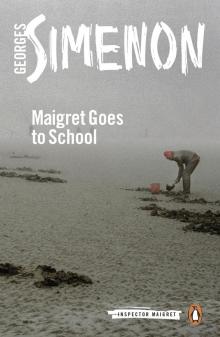 Maigret Goes to School
Maigret Goes to School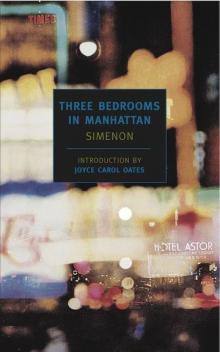 Three Bedrooms in Manhattan (New York Review Books Classics)
Three Bedrooms in Manhattan (New York Review Books Classics) The Hotel Majestic
The Hotel Majestic Maigret and the Tall Woman
Maigret and the Tall Woman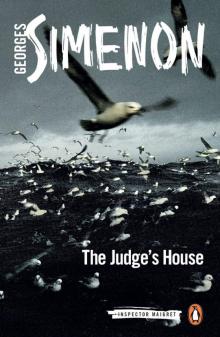 The Judge's House
The Judge's House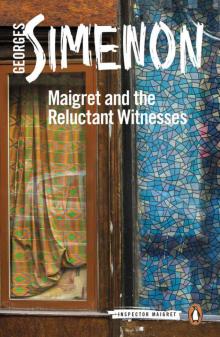 Maigret 53 Maigret and the Reluctant Witnesses
Maigret 53 Maigret and the Reluctant Witnesses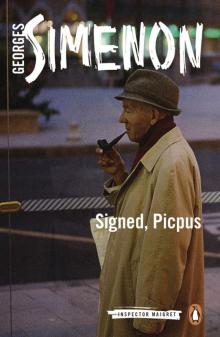 Signed, Picpus
Signed, Picpus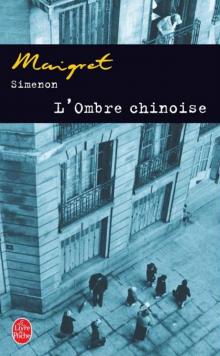 Maigret: The Shadow in the Courtyard (1987)
Maigret: The Shadow in the Courtyard (1987)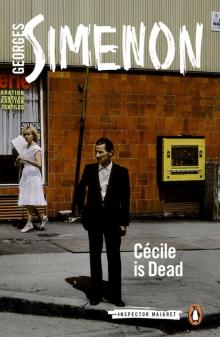 Cécile is Dead
Cécile is Dead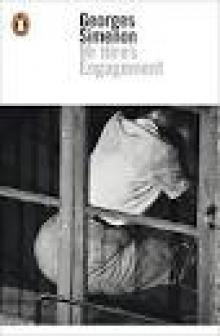 Mr Hire's Engagement
Mr Hire's Engagement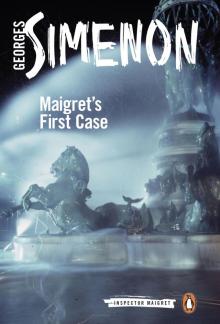 Maigret's First Case
Maigret's First Case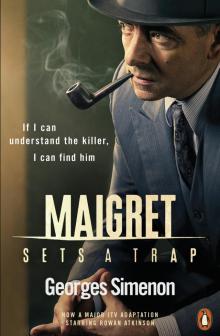 Maigret Sets a Trap
Maigret Sets a Trap